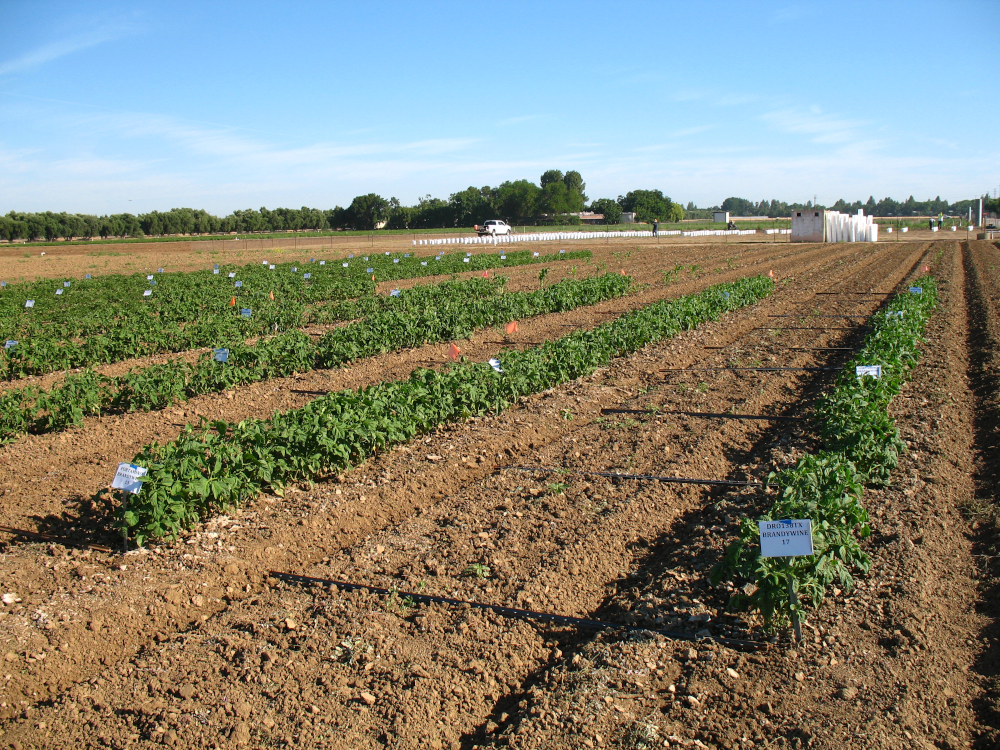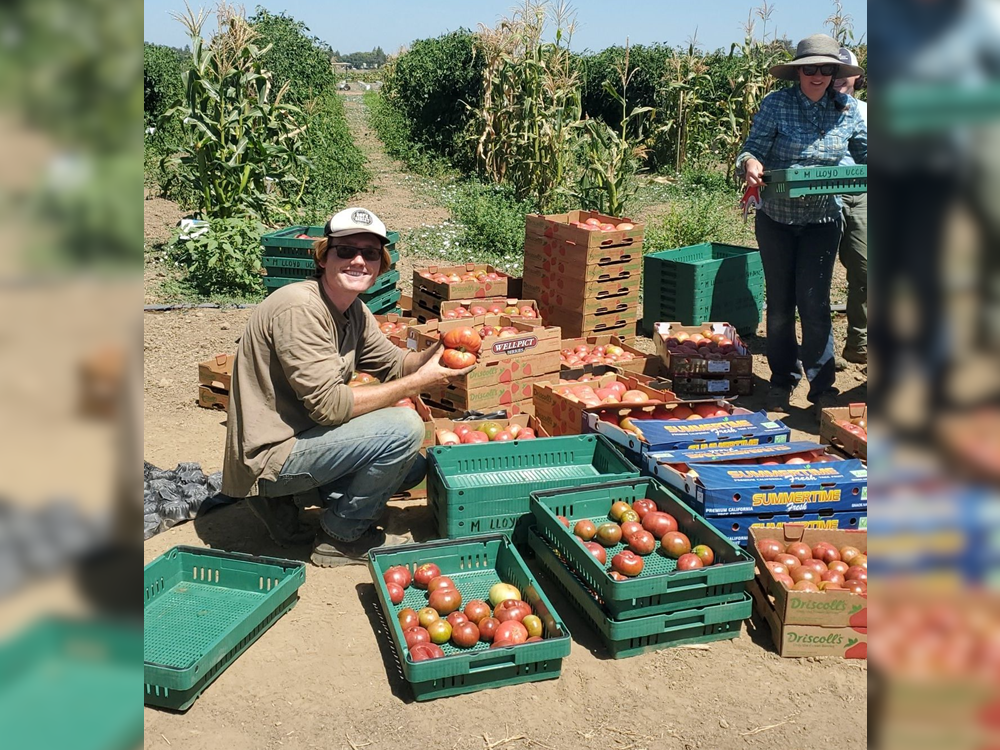Can grafting of drip irrigated organic fresh market tomatoes improve access to soil nitrogen?
Highlights
- In both years, the cover crop contained approximatley 100 lbs N/acre
- The C:N ratio of the cover crop was 10.6 in the first year and 17.5 in the second year
- 10.9% (year 1) and 3.2% (year 2) of N in the aboveground tomato biomass was N from the cover crop
- 57-67% of the total N in the avobeground tomato biomass was in the vines, the rest in the fruits
- Leaf analyses suggested that the tomato plants were not N deficient
- Rootstocks had no significant effect on the uptake of N derived from the cover crop
The Team
Daniel Geisseler, Margaret Lloyd, Monica Vazquez, Edward Turk
Background
Organic fresh-market tomatoes are now often produced with drip irrigation in California. Drip irrigation allows achieving a high water use efficiency. However, with drip irrigation a relatively small soil volume is kept moist during the growing season. As microbial and root activity depend on soil moisture, drip irrigation may limit root growth and nitrogen mineralization from organic material by microorganisms and thus limit the plant's access to soil nitrogen.
Objectives
The objectives of this project are to determine whether grafting fresh market tomato scions on different rootstocks improves the plants' ability to explore the soil's nitrogen pool, and to examine spatial and temporal patterns of nutrient availability, crop uptake and fruit quality under different drip irrigation management practices.
Our Approach
We are conducting replicated field trials at UC Davis over two seasons. During the 2019 season, our four treatments included Brandywine heirloom tomatoes grown on their own roots and grafted onto three different rootstocks (Maxifort, Fortamino and an experimental rootstock). During the 2020 season, Brandywine tomatoes will be grown on the most promising rootstock from the previous year with the treatments being number of driplines per bed (one or two) and frequency of irrigation. The treatments are replicated 5 times.
In both years of the trial, a legume cover crop mix, composed of bell beans, peas and vetch, was seeded in November. In February and March, we applied 15N fertilizer with foliar applications. During the first year of the trial, the cover crops were chopped and incorporated in late March and the tomatoes were transplanted in early May. During the growing season, we regularly collected leaf and soil samples. Tomatoes were harvested twice a week. At the end of the season, we also harvested whole plants. The uptake of nitrogen from the cover crop is tracked by analyzing the plant samples for total nitrogen and 15N. The same activities are planned for the second year of the trial.
Results
There were no significant differences in yield, N uptake and N partitioning in the plants due to rootstock treatments. Leaf analyses suggested that the tomato plants were not N deficient in either year. However, there was a significant difference in total N uptake from cover crop residues between years. This was caused by large differences in N concentration in the cover crop, which was the results of different rainfall totals during the two winters when cover crops were grown without irrigation. Though grafting has been found to alleviate negative effects of low nutrient availability and other causes of stress, this study does not provide evidence to suggest that grafting is an effective tool to improve tomato N uptake or yield in drip-irrigated ‘Brandywine’ heirloom tomatoes that are not N deficient.



